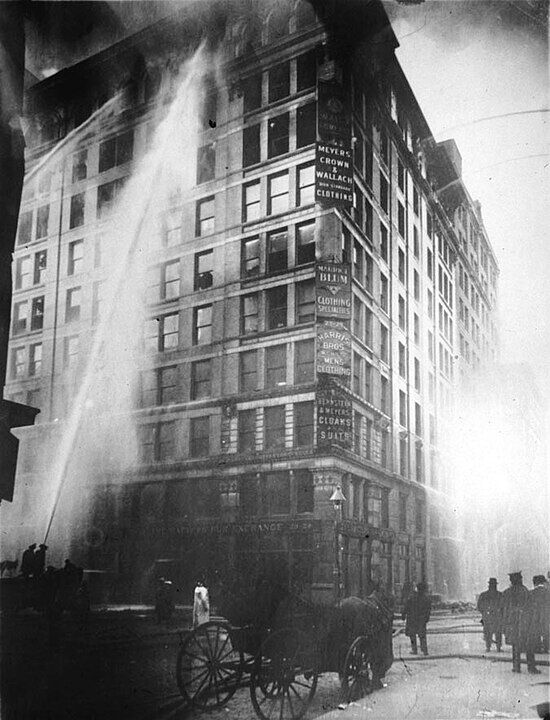On a warm afternoon in 1911, the dreams of 146 American immigrants would end abruptly. The Asch Building, a block or two east of Washington Square Park in New York, would become the site of one of the worst industrial disasters in American history. On the building’s top three floors, the 500 employees of the Triangle Shirtwaist Factory were finishing up work for the day. Many of the workers were young women, recently immigrated from Italy and Eastern Europe. Although we would deem it a sweatshop today, most considered this immigrant-owned business the height of efficiency for the time.
It was a Saturday, so the short seven-hour day ended at 5pm. Some would have glanced at their wristwatches reading 4.40pm. and begun to clean up their stations. The only thing left was to line up for inspection; a pesky task to ensure nobody was stealing anything. That’s why they always kept the doors locked. The owners didn’t want anyone running off with their goods.
Nobody saw when or how it started, but soon smoke began filling the rooms. Looking around, the women on the eighth floor would have noticed flames coming from a large wooden bin under one of the worker’s tables. The hundreds of pounds of scrap cloth accumulated for months under those tables were aflame within five minutes. Fire nipped at any flammable surface, which in this factory was everywhere.
Some workers on the eighth and tenth floors could use the elevator or take the stairs to the roof. Those on the ninth floor, though, were not so fortunate. There was no intercom or telephone system on that floor. The workers on floor nine only found out about the fire as it began to engulf them. By then, anyone with keys to the locked doors had already fled. The stairway down to Greene Street was on fire. Taking their chances, dozens of workers clambered out onto the fire escape. The slap-dash structure buckled under the weight. As onlookers filled the streets below, they would have watched in horror as the workers’ bodies and twisted wrought iron began raining down. One reporter on scene remarked he had, ‘… learned a new sound that day … the thud of a speeding living body on a stone sidewalk.’ An alderman remarked, “Occasionally a girl who had hesitated too long was licked by pursuing flames and, screaming with clothing and hair ablaze, plunged like a living torch to the street. Life nets held by the firemen were torn by the impact of the falling bodies.”
But from this tragedy came much-needed reform. Labour rights, including the right to unionise, and the beginnings of occupational health and safety reform, are all legacies of the Triangle Shirtwaist Factory. With the Industrial Revolution ending, workers were now demanding their rights as human beings instead of just a means of production.

This article is republished, with permission, from John Pabon. John is a sustainability strategist and author focused on helping businesses cut through greenwashing and make environmental responsibility profitable. He is the founder of Fulcrum Strategic Advisors and the author of “The Great Greenwashing.”





































